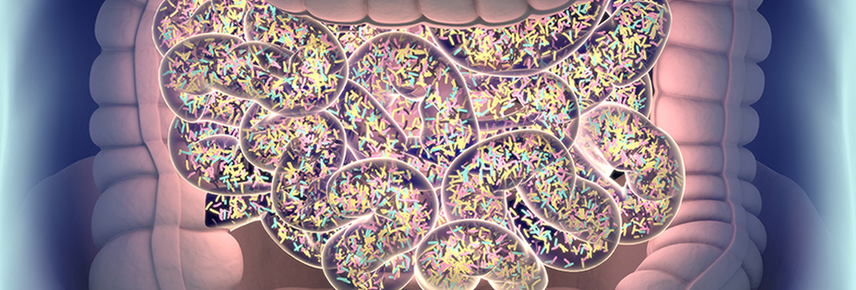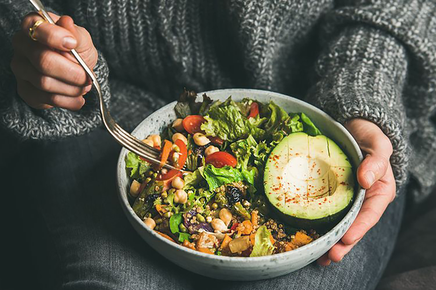1. Vemuri R, Gundamaraju R, Shastri MD et al. Gut Microbial Changes, Interactions, and Their Implications on Human Lifecycle: An Ageing Perspective. BioMed Research International, 2018; Vol. 2018, Article ID 4178607, 13 pages. https://www.hindawi.com/journals/bmri/2018/4178607/cta/
2. White LS, Van den Bogaerde J, Kamm M. The gut microbiota: cause and cure of gut diseases.Med J Aust 2018; 209 (7): 312-317. https://www.mja.com.au/journal/2018/209/7/gut-microbiota-cause-and-cure-gut-diseases
3. Sidhu M, van der Poorten, D. The gut microbiome. Aust Family Phys, 2017; 46(4): 206-11. https://www.racgp.org.au/afp/2017/april/the-gut-microbiome/
4. Bull MJ, Plummer NT. Part 1: The human gut microbiome in health and disease. Integr Med (Encinitas), 2014; 13(6):17-22. https://www.ncbi.nlm.nih.gov/pmc/articles/PMC4566439/
5. Ahmadmehradi S, Tang WHW. Gut microbiome and its role in cardiovascular diseases. Curr Opin Cardiol, 2017; 32(6):761-766. https://www.ncbi.nlm.nih.gov/pubmed/28360349
6. Holleran G, Lopetuso LR, Ianiro G et al. Gut microbiota and inflammatory bowel disease: so far so gut! Minerva Gastroenterol Dietol. 2017; 63(4):373-384. https://www.ncbi.nlm.nih.gov/pubmed/28293937
7. Graf D, Di Cagno R, Fak F, et al. Contribution of diet to the composition of the human gut microbiota. Microb Ecol Health Dis. 2015; 26:261-64. https://www.ncbi.nlm.nih.gov/pmc/articles/PMC4318938/
8. De Angelis M, Garruti G, Minervino F, Bonfrate L, Portincasa P, Gobbetti M. The food-gut human axis: The effects of diet on gut microbiota and metabolome. Curr Med Chem. 2017; 24:1. https://www.ncbi.nlm.nih.gov/pubmed/28462705
9. Singh RK, Chang H-W, Yan D, et al. Influence of diet on the gut microbiome and implications for human health. Journal of Translational Medicine. 2017; 15:73. https://www.ncbi.nlm.nih.gov/pmc/articles/PMC5385025/
10. Bian G, Gloor GB, Gong A, et al. The Gut Microbiota of Healthy Aged Chinese Is Similar to That of the Healthy Young. mSphere. 2017; 2(5). https://msphere.asm.org/content/msph/2/5/e00327-17.full.pdf
11. Lin D, Peters BA, Friedlander C, Freiman HJ et al. Association of dietary fibre intake and gut microbiota in adults. Br J Nutrition. 2018; 120(9): 1014-1022. https://www.cambridge.org/core/journals/british-journal-of-nutrition/article/association-of-dietary-fibre-intake-and-gut-microbiota-in-adults/B3CC9A3F0DCA89528FDC9CFF26089E74
12. Valdes AM, Walter J, Segal E, Spector TD. Role of the gut microbiota in nutrition and health. BMJ. 2018; 361. https://www.bmj.com/content/361/bmj.k2179
13. Australian Bureau of Statistics. Australian Health Survey: Nutrition First Results – Foods and Nutrients, 2011-12. Canberra: ABS; 2014. (Also available from: http://www.abs.gov.au/ausstats/[email protected]/Lookup/4364.0.55.007main+features12011-12, accessed 13 November 2018).
14. Australian Institute of Health and Welfare.Nutrition across the life stages. Cat. no. PHE 227. Canberra: AIHW; 2018.Also available from: https://www.aihw.gov.au/getmedia/fc5ad42e-08f5-4f9a-9ca4-723cacaa510d/aihw-phe-227.pdf.aspx?inline=true, accessed 13 November 2018).
15. National Health and Medical Research Council, Australian Government Department of Health and Ageing, and New Zealand Ministry of Health. Nutrient Reference Values for Australia and New Zealand. Canberra: NHMRC; 2006. (Also available from: https://www.nrv.gov.au/chronic-disease/micronutrients-dietary-fibre, accessed 13 November 2018).
16. Fayet-Moore F, Cassettari T, Tuck K, McConnell A, Petocz P. Dietary Fibre Intake in Australia. Paper II: Comparative Examination of Food Sources of Fibre among High and Low Fibre Consumers. Nutrients 2018; 10(9): 1223. https://www.ncbi.nlm.nih.gov/pmc/articles/PMC6163727/
17. Nutrition Research Australia, Breakfast and Breakfast Cereal Consumption Among Australians. A secondary analysis of the 2011-12 National Nutrition and Physical Activity Survey, Sydney, February 2016 https://www.mdpi.com/2072-6643/9/10/1045/pdf
18. Grains & Legumes Nutrition Council. Breakfast Cereal Audit 2018. (accessed 13 November 2018).
19. Jayachandran M, Chen J, Chung S, Xu B. A critical review on the impacts of β-glucans on gut microbiota and human health. The Journal of Nutritional Biochemistry 2018. 61: 101-110. https://www.sciencedirect.com/science/article/pii/S0955286317310070?via%3Dihub



